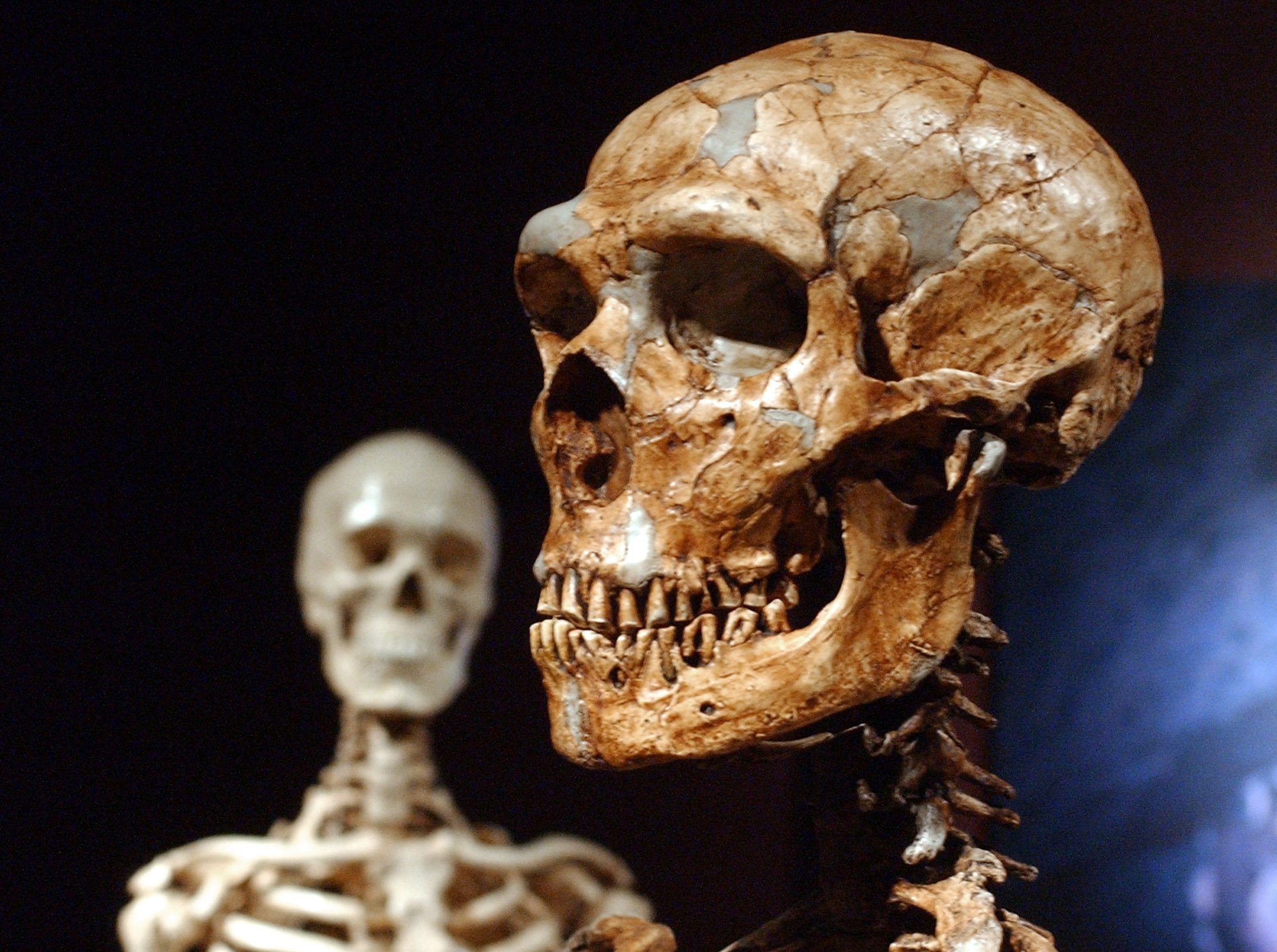
Their lives were nasty, brutish and short—and so were they, as it turns out. But our close evolutionary cousins the Neanderthals had plenty of admirable qualities, too. They were tidy and organized, for example. They ate their vegetables. They knew how to dress for any occasion.
It’s just as well to accentuate the positive, because once scientists sequenced the Neanderthal genome, it turned out that there is a little bit of the caveman in all of us—from 1-3 percent of the average person, says University of Washington geneticist Joshua Akey, is made up of genes we got from our cruder cousins. And yes, that means your many-greats grandmother or grandfather mated with a Neanderthal before the species went extinct some 30,000 years ago.
Thanks to a new analysis by Akey and several colleagues just published in Science, however, and a parallel study published at the same time in Nature, it’s now clear that the Neanderthals are more deeply a part of us than anyone thought. “We all have a small percentage,” says Akey. “But my one percent may be different from your one percent.” When you add up all those one percents, say the scientists, a collective 20 percent of the Neanderthal genome has survived, sprinkled across the entire human species. And in fact, says Akey, “there’s probably more.”
(MORE: How Life Began. New Clues From New Worlds)
Both teams came to their conclusions through the magic of statistics. In the research presented in Science, the investigators selected the genomes of 600 modern humans from Europe and East Asia—limiting themselves to those continents since the interbreeding with Neanderthals happened only after modern humans migrated out of Africa. Then they laid the sequences side by side, looking for two types of telltale genes.
The first would be ones that have lots of different variants—genes like those that code for height or weight, for example, as opposed to those that code for number of fingers and toes. Since Neanderthals were an older lineage than we are, their genes would have had more time to differentiate into multiple varieties. Second, the researchers were looking for unusually long genetic sequences. The mixing of modern humans and Neanderthal probably happened somewhere between 50,000 and 80,000 years ago. “That’s not so long ago,” says Akey. That means that the Neanderthal genes we did pick up would not have had much time to break apart and disperse—to get genetically digested, in a sense—across our species.
Akey’s team did all of their analysis without ever looking at the actual Neanderthal genome, identified promising sequences, then went back and checked against the real thing. The Nature team, led by Harvard geneticist Sriram Sankararaman, worked with 1,004 modern genomes, but they looked at the Neanderthal genome from the start and used a different statistical technique.
(MORE: The Most Important Brain in the History of Neuroscience)
Both teams, nonetheless, came up with data that supports the 20% figure. Both teams also found that Neanderthal genes aren’t distributed randomly through our own. There are long stretches, says Akey, where you find no Neanderthal DNA at all, suggesting that Neanderthal genes that could have occupied those places conferred no evolutionary advantage, and thus got weeded out. Genes that affect hair and skin, however, showed a fairly high frequency of Neanderthal influence, suggesting that the adaptations they’d made to relatively cold climates were helpful to modern humans’ survival.
This is hardly the last word on the topic; to the contrary, both groups, and many others, are delving even more deeply into the question of exactly which Neanderthal genes survive in which human populations, and why. “This may be one avenue,” says Akey, “to understanding at the genetic level what really makes us human.” It’s also a powerful reminder, he says, that our genomes have much to tell us about human prehistory. “We’re now able to make inferences about interactions with archaic humans that went extinct 30,000 years ago. I think that in the near future we’ll find ways to look for interactions with other extinct populations.”
In fact, Akey believes, there are already preliminary clues to such interactions. “If we look in a more diverse set of modern humans,” he says, “we may well find evidence of hominins,” or human-related species, “that we didn’t know existed.” The next time science discovers a new human ancestor, or a new cousin, in short, it might be a gene—not a bone—that tells the tale.
(MORE: Why It’s Good (For Someone Else) To Get Eaten By a Lion)
More Must-Reads from TIME
- Breaking Down the 2024 Election Calendar
- How Nayib Bukele’s ‘Iron Fist’ Has Transformed El Salvador
- What if Ultra-Processed Foods Aren’t as Bad as You Think?
- How Ukraine Beat Russia in the Battle of the Black Sea
- Long COVID Looks Different in Kids
- How Project 2025 Would Jeopardize Americans’ Health
- What a $129 Frying Pan Says About America’s Eating Habits
- The 32 Most Anticipated Books of Fall 2024
Contact us at letters@time.com